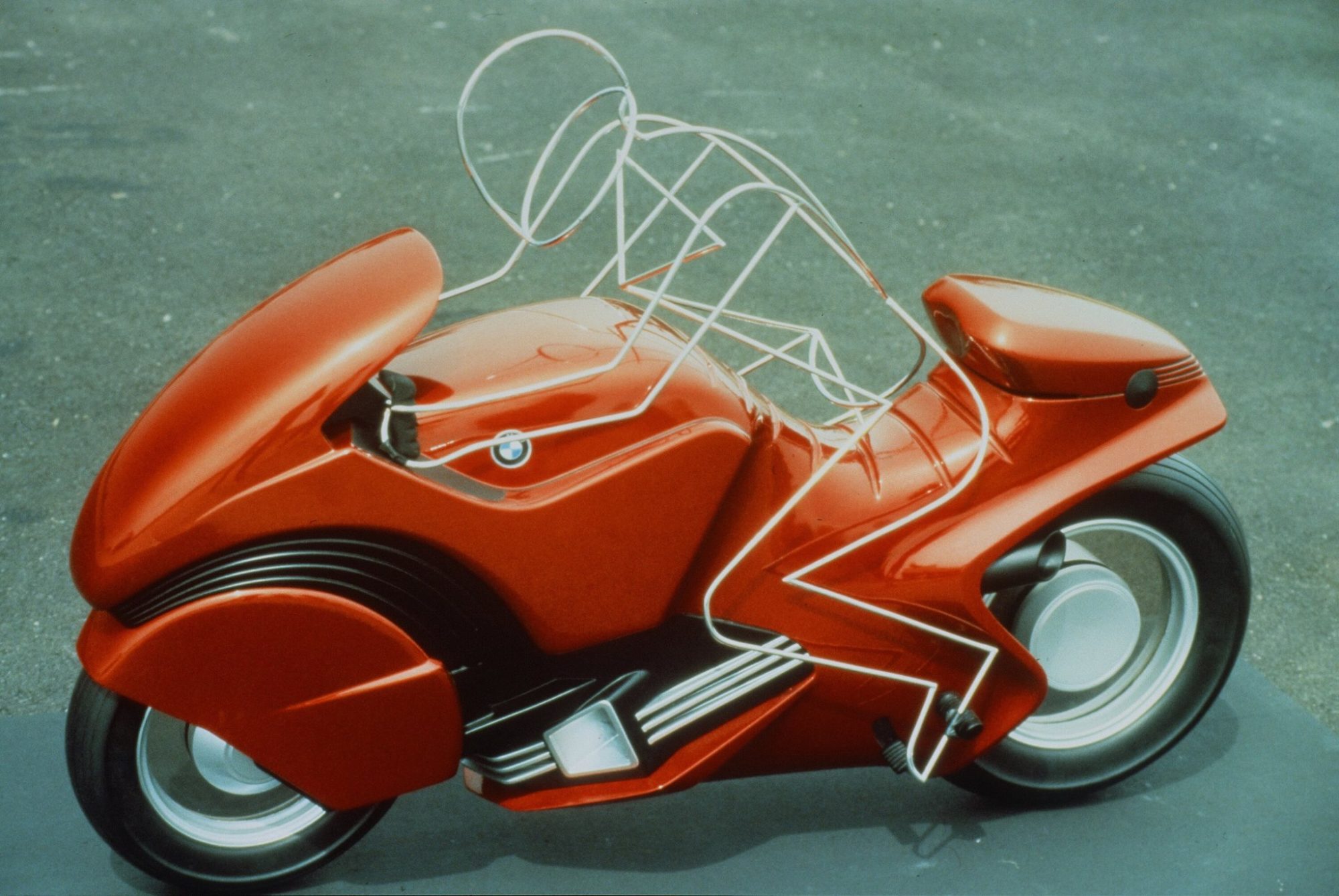The BMW K1 was revolutionary and at the time for many BMW drivers at least one bridge too far. Non-BMW drivers thought the machine was strange, too expensive and too much BMW.
The BMW K1 had some construction features that could be traced back to the 'Futuro' study model from 1981. That too was a fully streamlined machine with a basic paralever shape, but without a front fender at all. And that front fender was not to be overlooked on the K1. Like the Futuro, the K1 had integrated 'cases', but these were basically like the K1 glove boxes with a superiority complex. Purists hated the shapes of the 'suppository with cases' and entire tribes were thrown into confusion by the graphics on the body and the colored wheels.
You can argue about tastes, but the BMW K1 was a magnificent tool. The four-cylinder was made to blow over the 'Autobahn' for a long time with a cruising speed above 200 km / h. The super-power line was a kind of emergency jump to get up to speed because of the power limitation imposed by German importers and dealers themselves to 100 hp. The time that you could pay 1 euros for a K2.000 and that you could then call it owner is now over. At auction house Hemmings there was already a 'ZGAN' item in the list for $ 13.900. But how much crazier 'Ivanhoe's rocking horse' could have looked like, the accompanying early sketches show.
It cannot be said often enough: BMW is a very innovative motorcycle brand
But all innovations up to that point had been based on the boxer wins. And at BMW the idea had taken hold that it was precisely those boxertwins that were allowed to disappear from the program. That that did not happen because BMW wanted to continue to buy air-cooled boxertwins? Nobody in Berlin had taken that into account.
Time for something completely new: the BMW K100
BMW naturally had a lot of experience with liquid-cooled engine blocks with overhead camshafts. Those engines were already in full use, and to everyone's satisfaction in BMW quadricycles. Those sources of power were the best in their time: strong, dynamic and reliable. Making a liquid-cooled four-cylinder boxer was therefore obvious. But there was a huge danger in that approach: 'The Market' would all too easily say that such a machine would be a Honda Goldwing copy. The air-cooled boxers were a 'usp', a 'unique selling point' from BMW. The new Bavarian two-wheelers therefore had to distinguish themselves explicitly within the liquid-cooled four-cylinder market. The brand owed its reputation to that. And with the new four-cylinder long-stroke engine (to keep the wheelbase within limits) of the K100, BMW did that in a bewildering way.
Also interesting:
- The BMW R65 LS (1981-1986)
- BMW Mono (and the club)
- 'Blauwtje': A very special BMW R45
- BMW / 5. Very reliable
The four-cylinder lay lengthwise and on its side
The crankshaft was on the right in the block, the cylinders pointing to the left. On the right, therefore, was the crankcase cover, so that it was possible to work on the crankshaft without removing the four-cylinder. The engine had two valves per cylinder and Bosch L-Jetronic gasoline injection. The two overhead camshafts were driven by a chain. To eliminate the turning point that many people found so annoying to the boxers, as many parts as possible (dynamo, clutch and gearbox) turned opposite to the crankshaft. Thanks to the power of 90 hp, the K100 was able to keep up with the competition. From 1988, with the arrival of the BMW K1, 16-valve cylinder heads were also mounted on the K1 (and the K100 RS 16 Valve). Those sixteen valves proved that such engines could not only perform well at high speeds. The BMW K1 was also well on the way in the low and mid speed range.
The whole story resulted in the optimum powertrain, a very low center of gravity and space for the radiator above the block. The casing of the radiator with the first, bare K100s had the characteristic 'kidneys' that some rabid feminists abhor because they resemble female genitals too much. Hard core BMW boxer drivers found the entire four-cylinder thing to be reprehensible. Not BMW drivers had to get used to the idea that there were suddenly BMWs for people without nostagic brand loyalty.
The whistling brick
And in England, the BMW K100 was given the nickname 'the whistling brick' or 'the flying brick' during the first tests because of its engine block. The whistling or flying brick so ... That first 'bare' BMW K100 soon had family expansion of various family members equipped with sporting or touring tubs. And that that tubwork had graduated in the wind tunnel? Oh well, you couldn't expect less from the blue / white brand?
The BMW K1 was the top of the line. Oh yes: a K1 was an expensive thing
Such a streamlined BMW K1 cost 27.500 hard guilders. But genuine BMW buyers are never very shocked by high prices. We know one who increased the mortgage on his house in order to buy his dream bike.







Too bad about that broken taillight and that extra lever to put on the centerstand.